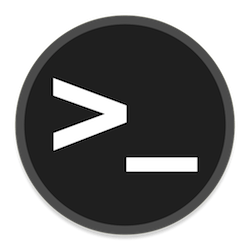How To Fix NPM Error: EACCES: Permission Denied

Node Package Manager (NPM) is an essential tool in the JavaScript ecosystem, enabling developers to easily install and manage dependencies for their projects. However, encountering the EACCES error can be frustrating and hinder your development workflow. This error typically occurs when you try to install packages globally without proper permissions. In this article, we’ll dive into the causes of the EACCES error and explore various solutions to fix it, ensuring a smooth and uninterrupted development experience.
Understanding the EACCES Error
The EACCES error, which stands for “Error: Access Denied,” is a common permission-related issue that developers face when working with NPM. It usually arises when you attempt to install a package globally or access a directory without sufficient permissions. This error indicates that the current user does not have the necessary privileges to perform the requested action.
Improper use of the sudo command is a common culprit behind the EACCES error. Using sudo to install packages globally can lead to conflicts between the root user’s permissions and your regular user account. It’s important to understand the implications of using sudo and explore alternative approaches to avoid permission issues.
Causes of EACCES Error
To effectively troubleshoot the EACCES error, it’s crucial to understand the underlying causes. Filesystem permissions play a significant role in this error. Each file and directory in a Linux system has associated permissions that determine who can read, write, or execute them. When you attempt to perform an action without the required permissions, the EACCES error occurs.
Using the sudo command to install packages globally can also contribute to the EACCES error. While sudo grants temporary superuser privileges, it can create conflicting permissions between the root user and your regular user account. This can lead to situations where your regular user is unable to access or modify certain files or directories.
Another factor to consider is the difference between installing packages globally and locally. Global installations affect the entire system and require administrative privileges, whereas local installations are specific to a project and do not require superuser permissions. Understanding these distinctions can help you make informed decisions about package installation and avoid permission conflicts.
Solutions to Fix EACCES Error
Now that we understand the causes of the EACCES error, let’s explore various solutions to fix it and regain smooth access to NPM functionality.
1. Change Directory Ownership
One approach to resolve the EACCES error is to change the ownership of the problematic directory, typically the .npm directory in your home folder. Here’s how you can do it:
- Open a terminal window.
- Run the following command to change the ownership of the
.npmdirectory to your user account:
sudo chown -R $(whoami) ~/.npmThis command uses sudo to execute the chown command with superuser privileges, allowing you to modify the ownership of the directory. The -R flag ensures that the ownership change is applied recursively to all files and subdirectories within .npm.
2. Configure NPM to Use a Different Directory
Another solution is to configure NPM to use a different directory for global package installations. By setting up a new directory within your home folder and granting the necessary permissions, you can avoid conflicts with system-wide directories. Here’s how to do it:
- Create a new directory for global packages in your home folder:
mkdir ~/.npm-global- Configure NPM to use the new directory for global installations:
npm config set prefix '~/.npm-global'- Open your shell’s configuration file (e.g.,
~/.bashrcor~/.zshrc) and add the following line:
export PATH=~/.npm-global/bin:$PATH- Save the changes and restart your terminal or run
source ~/.bashrc(or the appropriate command for your shell) to apply the changes.
With these steps, NPM will use the new directory (~/.npm-global) for global package installations, avoiding permission issues with system-wide directories.
3. Using a Node Version Manager
Node Version Managers, such as NVM (Node Version Manager), provide a convenient way to manage multiple versions of Node.js and NPM on your system. They allow you to install and switch between different versions without requiring superuser privileges. Here’s how to use NVM to prevent permission errors:
- Install NVM by following the official installation instructions from the NVM repository.
- Once NVM is installed, you can install a specific version of Node.js using the following command:
nvm install <version>Replace <version> with the desired Node.js version (e.g., 14.17.0).
- Set the installed version as the default:
nvm alias default <version>By using NVM, you can manage Node.js and NPM versions within your user account, eliminating the need for superuser privileges and reducing the chances of encountering the EACCES error.
4. Avoid Using Sudo
While it may be tempting to use sudo to quickly resolve permission issues, it’s generally recommended to avoid using sudo with NPM commands. Using sudo can lead to security vulnerabilities and create conflicts with file permissions.
Instead of relying on sudo, consider the alternative solutions mentioned above, such as changing directory ownership, configuring NPM to use a different directory, or using a Node Version Manager. These approaches allow you to manage packages and permissions more securely and sustainably.
If you must use sudo for a specific reason, be cautious and ensure that you understand the implications and potential risks involved.
5. Reinstall NPM
In some cases, reinstalling NPM can help resolve permission issues. You can reinstall NPM using a Node Version Manager or by manually downloading and installing it from the official NPM website.
When reinstalling NPM, make sure to follow best practices and consider the solutions mentioned earlier to ensure proper permissions are set from the start. This can help prevent future occurrences of the EACCES error.